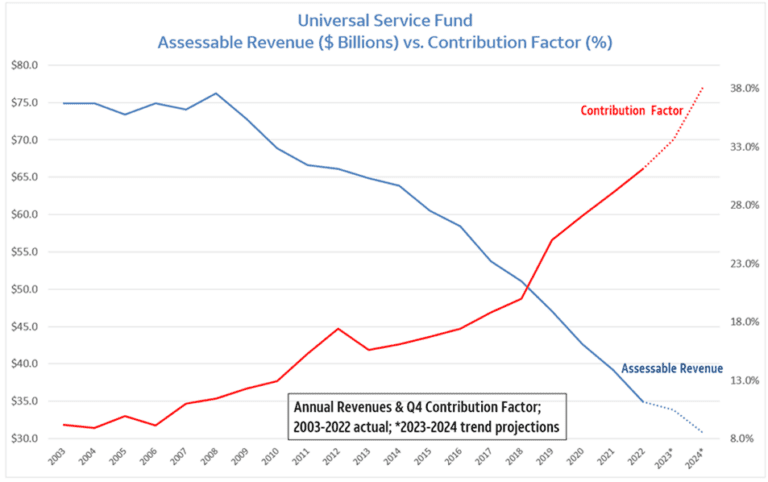Last week, the FCC announced the proposed Universal Service Fund Contribution Factor for the fourth quarter of 2023. At a staggering 0.345, or 34.5 percent, this figure marks an unprecedented high in the history of this vital telecommunications fund.
The Universal Service Fund (USF) has become a topic of concern in the telecommunications industry, and rightly so. This crucial fund plays a pivotal role in ensuring that telecommunications services are accessible and affordable for all Americans. To comprehend why this factor has been on the rise, let's delve into the various programs it supports and why it's in dire need of reform.
Supporting Essential Programs
At the heart of the matter is the Universal Service Fund (USF), a multifaceted initiative that champions accessibility and affordability in the realm of telecommunications. Here are the key programs that the USF bolsters:
Lifeline: This program extends a lifeline to low-income households by providing monthly discounts on phone and internet services.
E-Rate: Schools and libraries benefit from the E-Rate program, which offers discounts on telecommunications services and equipment, fostering education and information access.
Rural Health Care: Telemedicine services in remote, underserved areas receive vital support from the USF through the Rural Health Care program.
High-Cost Fund: High-cost areas, where providing telecommunications services can be economically challenging, receive essential support from this program.
The USF is primarily funded through a percentage of interstate telecommunications revenue collected from telecommunications providers. This contribution factor is not static; it's adjusted quarterly to ensure that the USF remains adequately funded to support these critical programs.

Source: "Lawmakers Have a Unique Opportunity to Modernize the Universal Service Fund"
Author: Rhonda Johnson, EVP, Federal Regulatory Affairs, AT&T: August 28, 2023
The Downside of a High Contribution Factor
While the USF serves noble purposes, the high Universal Service Fund Contribution Factor does come with its downsides. Telecommunications providers are directly affected, as it significantly increases their operational costs. Unfortunately, these increased costs are often passed down to consumers, resulting in higher telecommunications bills at the end of the month.
Furthermore, a high contribution factor can hinder telecommunications providers from investing in new technologies and services. This limitation could potentially lead to a decline in the quality and reliability of telecommunications services, which is far from ideal for consumers.
Another aspect to consider is the impact on smaller telecommunications providers. They may find it exceptionally challenging to compete with larger entities that can more effectively absorb the financial burden associated with a high contribution factor.
Exploring Solutions to Reduce the Contribution Factor
Congress is currently working towards ways to fix this unsustainable increase in USF costs. Addressing the issue of a high Contribution Factor is not without its complexities, but several potential solutions have been discussed;
Enhancing Efficiency: One avenue to reduce the contribution factor involves streamlining the administration of the USF, thereby minimizing associated costs and ensuring subsidies are targeted more effectively.
Expanding the Contribution Base: Broadening the USF contribution base to include new sources of revenue, such as tech giants and broadband internet service providers, could alleviate some of the pressure.
Scope Reduction: Evaluating the scope of the USF and potentially scaling back or eliminating support for certain programs might be a necessary step.
It's important to approach any changes to the USF with careful consideration, ensuring that the fundamental goal of providing all Americans with access to affordable and reliable telecommunications services remains intact. Finding the right balance between funding these essential programs and easing the burden on consumers and providers alike is a complex but essential task.
For more information about the Universal Service Fund (USF) and how you can lower your costs today, please contact us or read more at our webpage, here.
We also invite you to join our webinar on The Current State of the USF & Best Filing Practices this week on September 28th at 3 p.m.
